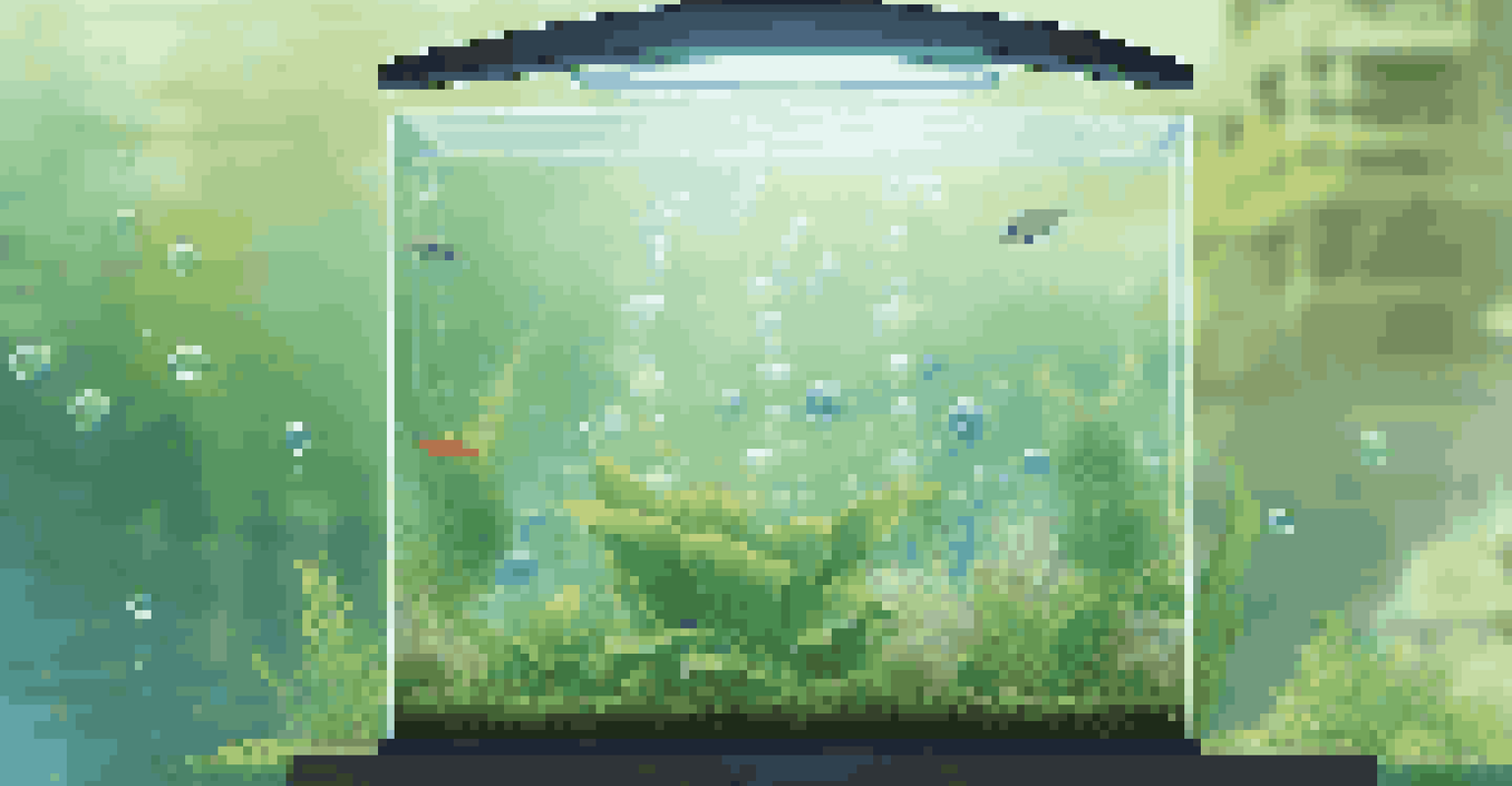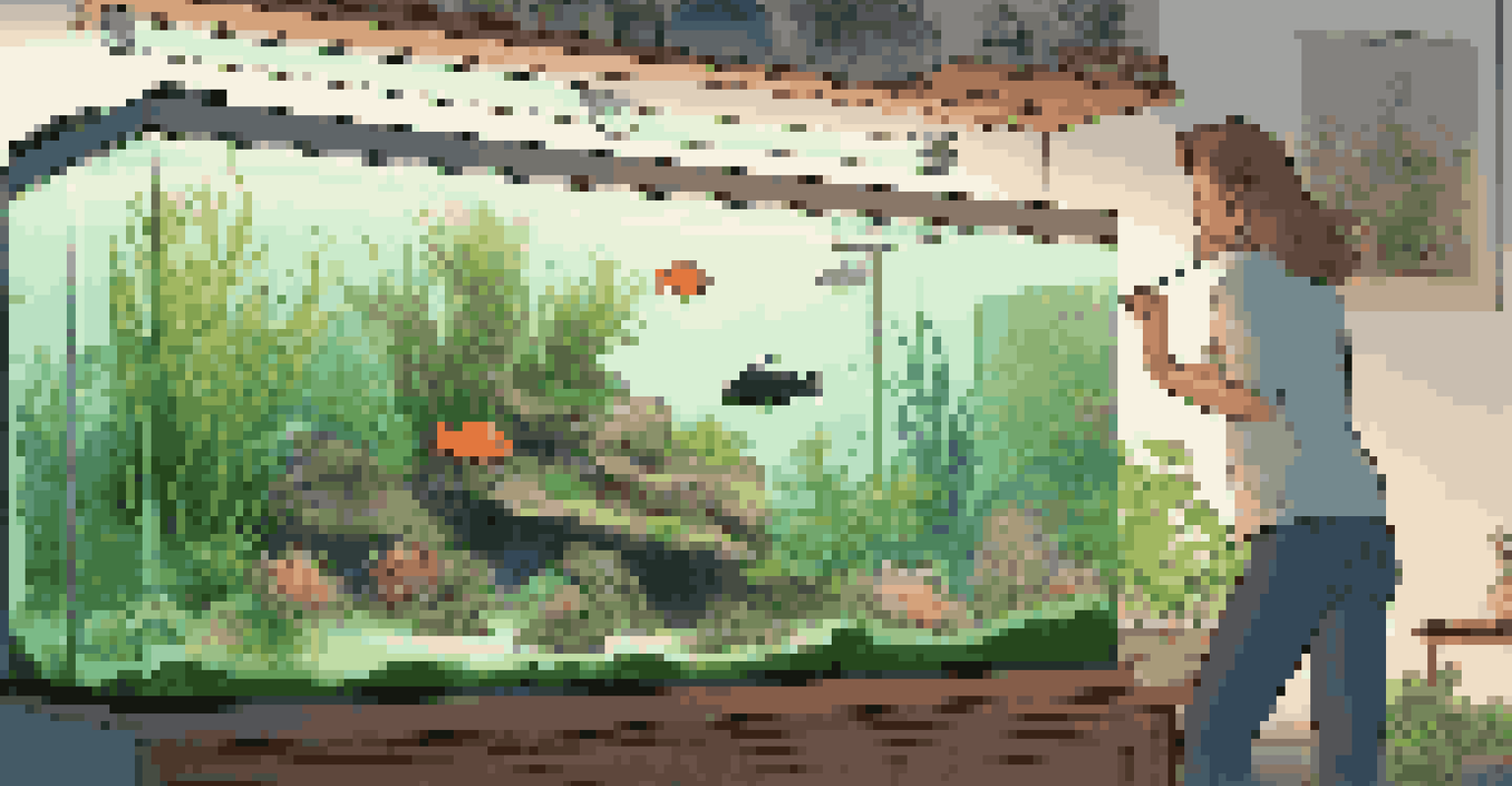The Importance of CO2 in Aquascaping: A Beginner’s Guide

Understanding CO2: What It Is and Why It Matters
Carbon dioxide (CO2) is a colorless gas essential for plant growth. In the context of aquascaping, it plays a crucial role in photosynthesis, where aquatic plants convert light into energy. Without sufficient CO2, your plants may struggle to thrive, leading to poor health and unsightly algae growth.
The best time to plant a tree was twenty years ago. The second best time is now.
Imagine trying to breathe with a cloth over your mouth; that’s how plants feel without enough CO2. They need this gas to create the food they require for growth and vibrant color. So, understanding CO2 is the first step in creating a flourishing underwater garden.
In aquascaping, maintaining the right balance of CO2 can mean the difference between a lush landscape and a stagnant, algae-filled tank. This guide will help you grasp the basics of CO2 and its vital role in your aquatic ecosystem.
Photosynthesis: The Process Behind Aquatic Growth
Photosynthesis is the process by which plants use sunlight, water, and CO2 to produce energy. This energy not only fuels the growth of the plants but also contributes to the overall health of your aquarium. The more efficiently your plants photosynthesize, the clearer and healthier your tank will be.

Think of photosynthesis like a recipe; each ingredient must be present for the meal to be successful. CO2 is one of those essential ingredients that, when balanced properly, leads to a flourishing aquatic ecosystem. Without it, your plants may grow slowly or not at all.
CO2 is Vital for Plant Growth
Carbon dioxide is essential for photosynthesis, enabling aquatic plants to thrive and contribute to a healthy aquarium.
Understanding how photosynthesis works will help you appreciate why CO2 supplementation is so important. By providing your plants with the necessary resources, you create a thriving environment that benefits both flora and fauna in your tank.
The Benefits of Adding CO2 to Your Aquascape
Adding CO2 to your aquarium can lead to faster plant growth, improved health, and vibrant colors. When plants receive adequate CO2, they can photosynthesize more effectively, which means they'll grow lush and full. This not only enhances the beauty of your aquascape but also contributes to a healthier environment for your fish.
Nature does not hurry, yet everything is accomplished.
Moreover, CO2 helps in preventing algae blooms. Algae often thrive when there's an imbalance of nutrients in the tank, and with well-fed plants utilizing CO2, there’s less chance for algae to take hold. Essentially, by providing enough CO2, you're creating a competitive edge for your plants over algae.
Incorporating CO2 into your aquascaping routine can transform your aquarium from an ordinary setup to a vibrant underwater paradise. The benefits are clear: healthy plants lead to a balanced ecosystem, which is the foundation of successful aquascaping.
Choosing the Right CO2 System for Your Tank
When it comes to selecting a CO2 system, there are several options available, ranging from DIY setups to professional systems. If you’re just starting, a simple pressurized CO2 system might be the way to go. These systems are easy to use and can be adjusted to meet the needs of your specific tank.
Alternatively, if you're feeling adventurous, a DIY method using yeast can be both cost-effective and satisfying. However, keep in mind that DIY systems often require more frequent monitoring and adjustments compared to pressurized systems, which tend to be more stable.
Monitor CO2 Levels Regularly
Using tools like drop checkers can help ensure optimal CO2 levels, promoting plant health and preventing algae growth.
Ultimately, your choice should depend on your budget, tank size, and level of experience. No matter which system you choose, ensuring a consistent CO2 supply is key to achieving a thriving aquascape.
Monitoring CO2 Levels: Tools and Techniques
Monitoring CO2 levels in your aquarium is essential for maintaining a healthy balance. One effective way to do this is by using a drop checker, a simple device that changes color based on the CO2 concentration in the water. This visual indicator makes it easy to see if your levels are in the optimal range.
Additionally, keeping an eye on your plants’ health can also provide clues about CO2 levels. If your plants are turning yellow or showing signs of stunted growth, it may be time to adjust your CO2 supply. Observing these changes can help you become more attuned to your tank's needs.
Regular testing is crucial, especially when you first set up your CO2 system. By understanding the relationship between CO2 levels and plant health, you can fine-tune your approach for the best results.
Common Mistakes with CO2 in Aquascaping
One of the most common mistakes beginners make is adding too much CO2 too quickly. This can lead to rapid pH fluctuations, which can stress or even harm your fish. It's always best to start slow and gradually increase your CO2 levels while monitoring your aquarium closely.
Another mistake is neglecting to balance CO2 with other nutrients, such as nitrogen and phosphorus. An imbalance can lead to poor plant health and increased algae growth, negating the benefits of CO2 supplementation. Remember, aquascaping is about creating a balanced ecosystem.
Balance CO2 with Nutrients
It's crucial to maintain a balance between CO2 and other nutrients to create a thriving ecosystem and avoid algae issues.
Being aware of these common pitfalls can save you time and frustration on your aquascaping journey. Learning from others' mistakes can guide you toward establishing a thriving underwater environment.
Incorporating CO2 with Other Aquascaping Techniques
CO2 supplementation works best when combined with other aquascaping techniques. For instance, pairing CO2 with proper lighting can significantly enhance plant growth. More light means more energy for photosynthesis, which, when combined with adequate CO2, leads to thriving aquatic plants.
Additionally, maintaining water quality through regular changes and testing can create the ideal environment for your plants and fish. Clean water helps plants absorb nutrients more effectively, allowing them to fully utilize the CO2 you provide.

Ultimately, integrating CO2 with these other techniques can lead to a more harmonious and balanced aquarium. When all elements work together, you’ll witness the beauty of a well-maintained aquascape come to life.